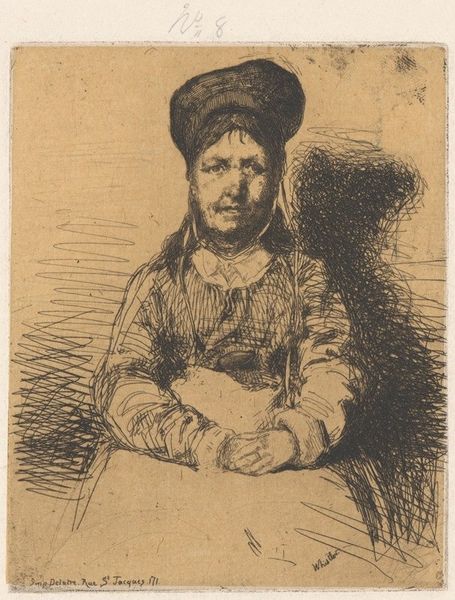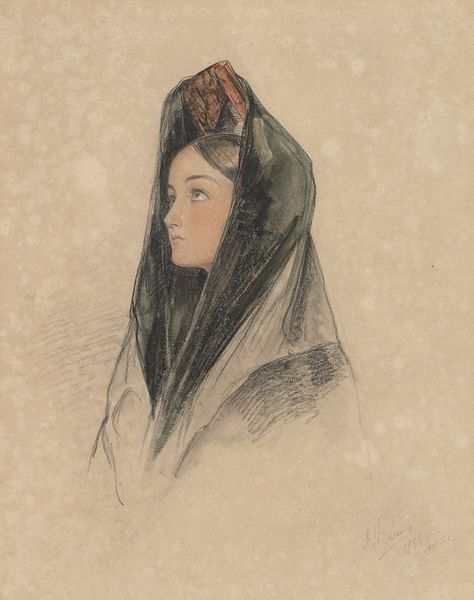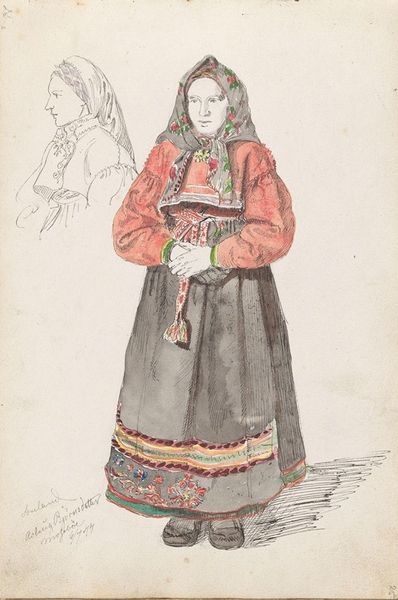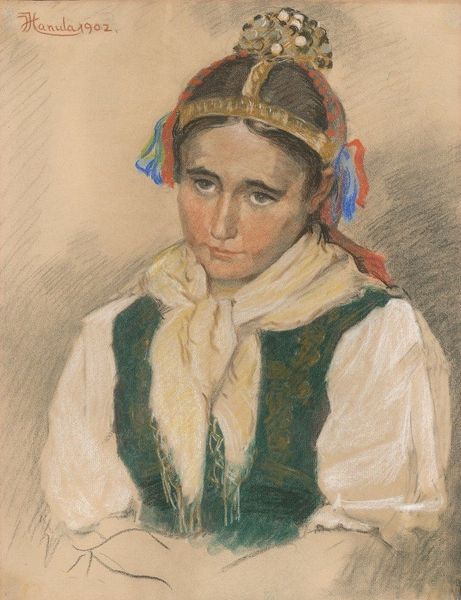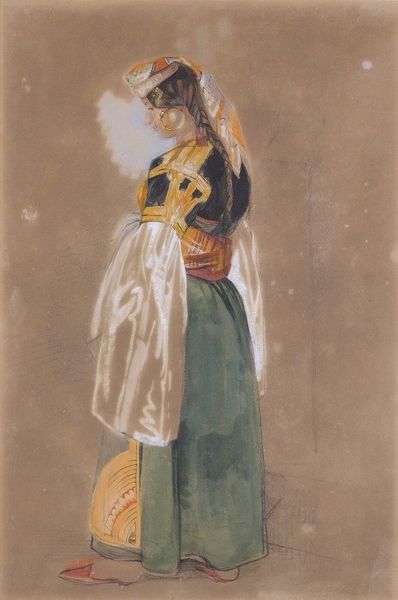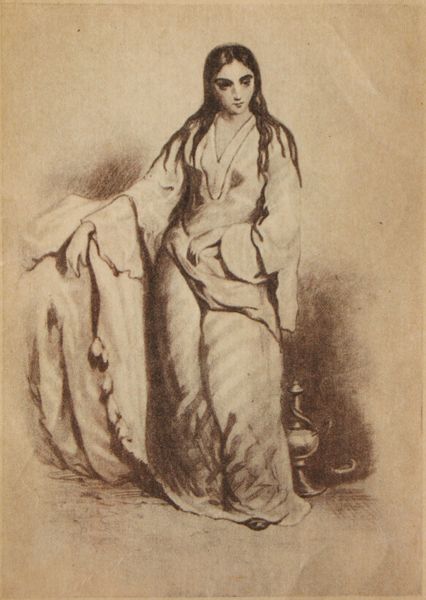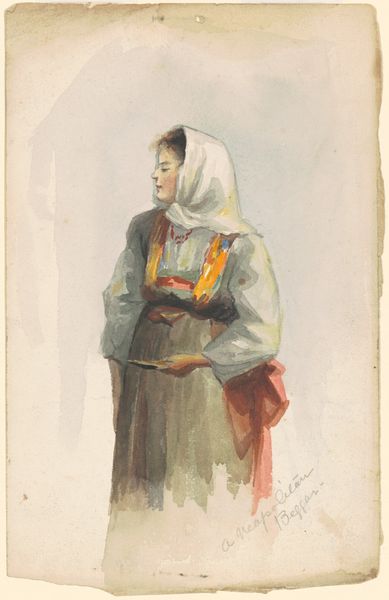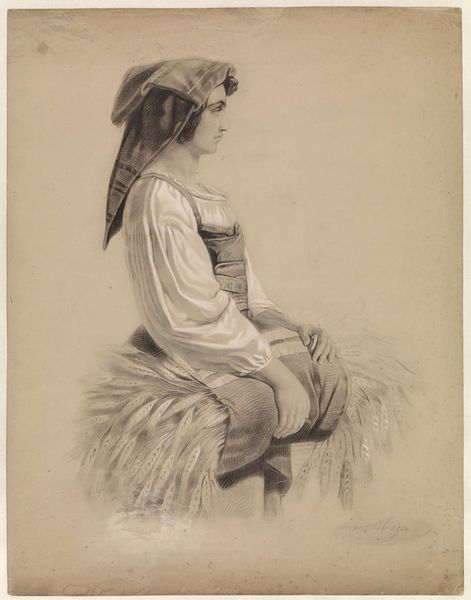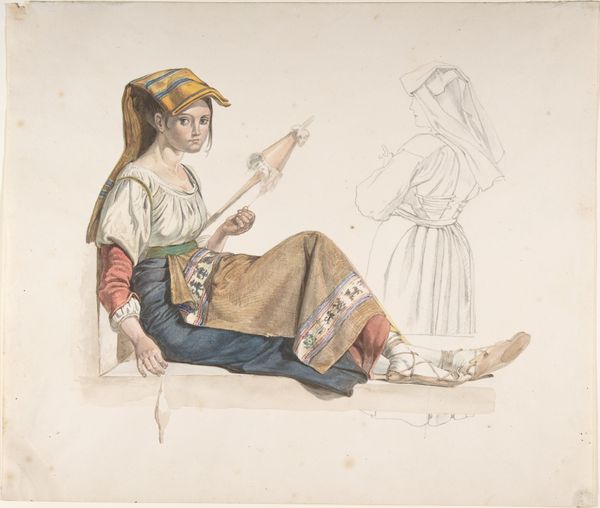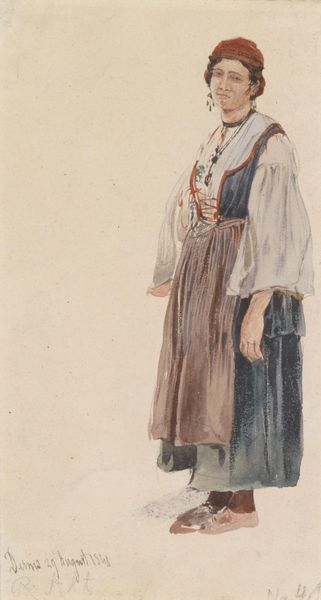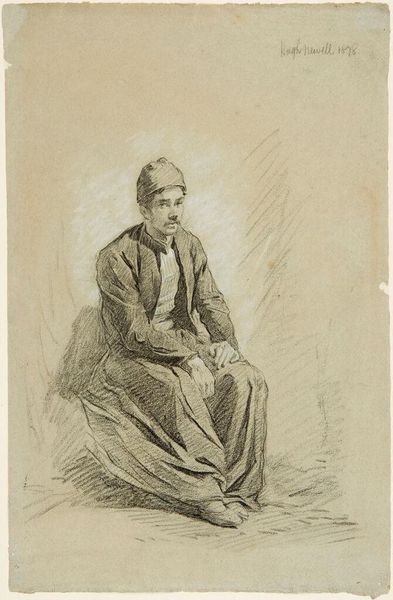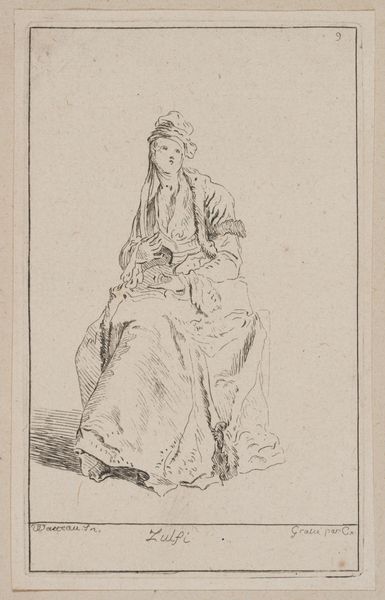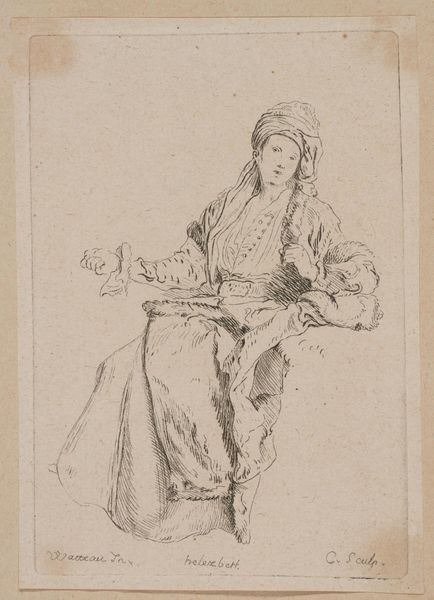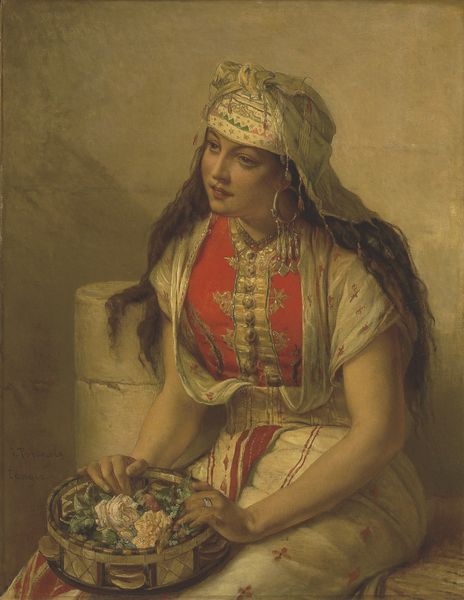
drawing, paper, watercolor
#
portrait
#
drawing
#
charcoal drawing
#
paper
#
oil painting
#
watercolor
#
coloured pencil
#
romanticism
#
orientalism
#
watercolour illustration
Copyright: Public domain
Editor: We’re looking at "A North African Jewess," a watercolor on paper created by Eugène Delacroix in 1847. The woman’s gaze is so direct, and yet there’s a sadness or resignation in her expression that’s really striking. What do you see in this piece? Curator: What strikes me is the complex interplay of Romanticism and Orientalism in Delacroix's work. He positions himself as an outsider looking in, representing the "exotic other" but with an attention to detail and, perhaps, a sensitivity not always present in his contemporaries. We must acknowledge the power dynamics at play, the gaze of the colonizer framing the subject's identity. Do you see how the clothing and adornment act almost as a costume, reinforcing stereotypes, while also hinting at individuality? Editor: I do. The detail in her headdress versus the more loosely defined clothing creates a sort of focal point. Does this reflect something about how Delacroix viewed her, or North African women in general? Curator: Precisely. The focus on specific details while glossing over others speaks volumes about what aspects of identity were considered worthy of attention by the dominant culture. The woman's gaze, as you pointed out, challenges this somewhat, suggesting a subjectivity that resists easy categorization. But we need to ask, whose gaze are we privileging here—Delacroix's, or her own imagined one? How might a North African woman from that period view this representation of herself? Editor: So it’s not enough to just appreciate the aesthetic qualities; we have to consider the politics embedded in the image itself. Curator: Exactly. We must use a lens of intersectionality, exploring the intricate layers of gender, race, class, and colonial power present in the painting to deconstruct it. By understanding Delacroix's positionality and the historical context, we can unpack some of the Orientalist tropes prevalent in his art and other art from that era. Editor: That's a lot to consider! I definitely see this painting in a different light now, with all the complex sociopolitical issues. Curator: Art can give a great perspective into intersectional narratives when you explore its history, the artist’s position, and cultural background.
Comments
No comments
Be the first to comment and join the conversation on the ultimate creative platform.
